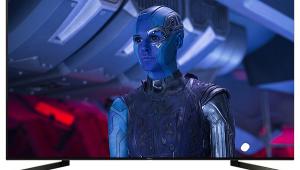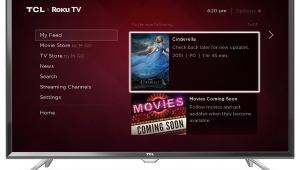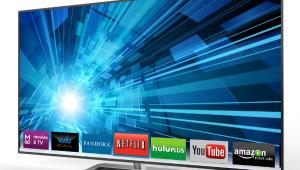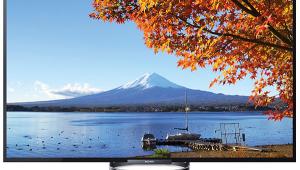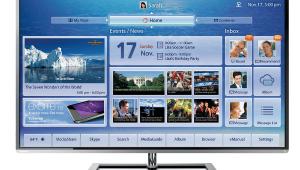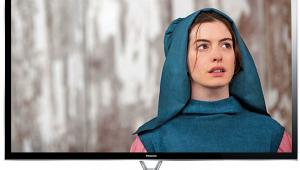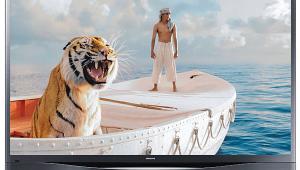Samsung UN55HU8550F 3D LCD/LED Ultra HDTV Test Bench
Measurements were made using CalMAN measurement software from SpectraCal, together with Photo Research PR-650 and Klein K-10A color meters, and the VideoForge pattern generator from AVFoundry.
Full-on/Full-Off Contrast Ratio: Unmeasurable
With a full black test pattern on the screen, the LED edge lighting shuts down completely at any setting of the Smart LED (edge-lit local dimming). But this is meaningless with normal images. Displaying a small, white pause bug in the corner of a full black screen, however, triggers the black level on the entire screen to rise to a higher level. In this situation, with Smart LED on High, the black level was 0.0043 ft-L at a white level of 36.7 ft-L (both measured on the Klein K-10A), for a full-on/full-off contrast ratio of 8,535:1. With Smart LED off, these measured values were 0.026 ft-L, 35.6 ft-L, and 1,369:1. Keeping Smart LED engaged is the obvious choice, and I found no downside to using it on High.
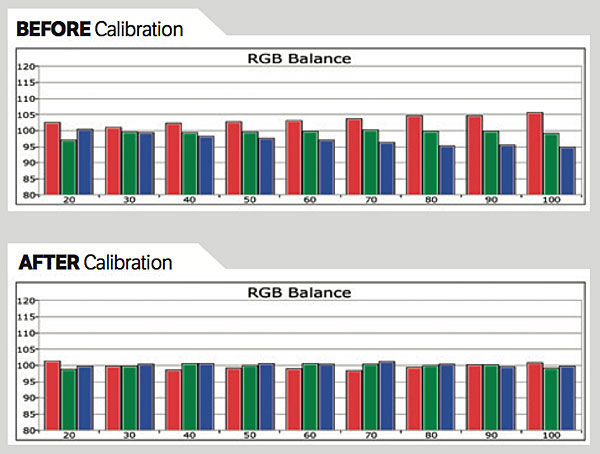
The set was calibrated for this review in 2D only, and the Movie Picture mode was used exclusively. In the Movie Picture mode and Warm2 Color Tone (Samsung’s name for color temperature), the set’s pre-calibration Delta E values averaged 2.8 at a peak white level of about 35 ft-L. Although it measured over 3 starting at 70% (rising to a peak of 6.27 at 100%), the image was highly watchable. After calibration, using only the 2-point White Balance controls (the 10-point controls weren’t needed), the gray-scale Delta E averaged 0.56 with a maximum of 1.12 at 70%. Post-calibration color was hard to criticize.
Delta E indicates how closely a display adheres to the Rec. 709 HD color standard. Experts generally agree that at levels below 3 to 4, the result is indistinguishable from perfect color tracking. A Delta E is used to characterize both white balance (gray scale) or color. In the Auto Color Space setting, the color gamut’s pre-calibration color Delta E averaged a respectable 1.27. After calibration in the Custom setting, it averaged an exceptional 0.40.

With the Gamma control on 0, the gamma averaged 2.19, with a low of 2.13 at 20% brightness and a high of 2.23 at 50% and 60%. Changing the Gamma setting to –1 (the only other setting I sometimes found useful in 2D) produced an average gamma of 2.29. To check the maximum light output capability of the set, I used the Dynamic Picture mode in its default settings (no calibration controls are offered in this mode). I measured a peak white level of 94.15 ft-L.—TJN

